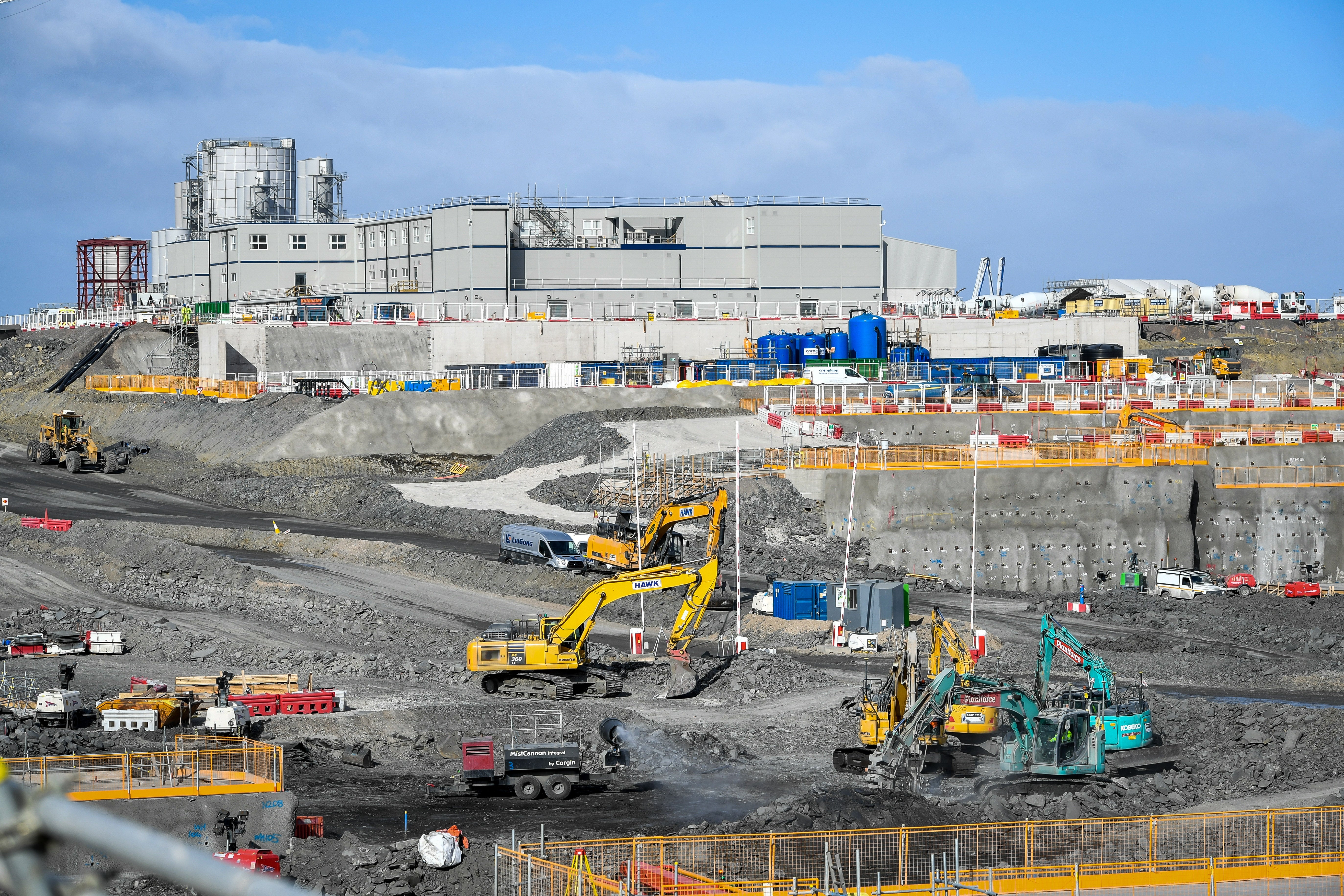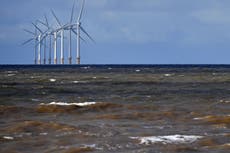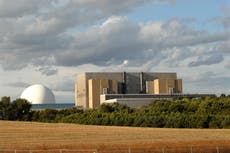What is nuclear energy?
Kwasi Kwarteng to unveil new UK power strategy in bid to make country more self-sufficient and less dependent on ‘volatile international prices’
Boris Johnson’s government has unveiled its long-delayed new national energy strategy, placing renewed emphasis on nuclear power and the exploitation of hydrogen while stopping short of ending the current block on onshore wind turbines, despite appeals from Labour that it pass new legislation to help households save £200 a year.
Ahead of the strategy’s unveiling by business secretary Kwasi Kwarteng, a move held up by rows with the Treasury over its funding, the prime minister claimed it “could” mean 95 per cent of Britain’s electricity will be low carbon by 2030 and that 40,000 new jobs will be created in clean industries.
“This will reduce our dependence on power sources exposed to volatile international prices we cannot control, so we can enjoy greater energy self-sufficiency with cheaper bills,” Mr Johnson said, alluding to the energy problems European nations now find themselves faced with as a consequence of Russia’s assault on Ukraine, which has seen the invader heavily sanctioned and its gas exports spurned at no little cost to the governments taking a moral stand against its war.
The plan sets out the government’s ambition to build eight new nuclear reactors, overseen by a new body called Great British Nuclear, to improve energy self-sufficiency by providing 25 per cent of the UK’s electricity by 2050, although doubts about funding and affordability are likely to linger.
The National Infrastructure Commission has warned that nuclear plants are “incredibly difficult to deliver on short timescales” and may not come online until the mid-2040s.
That concern is shared by the likes of Steve Malkin, CEO of sustainability group Planet Mark, who cautioned that the technology “won't deliver for decades and the high cost of construction will certainly mean ongoing delays, plus it involves expensive downstream costs”.
So what precisely is nuclear power, what are its benefits and how “clean” is it as a technology?
Simply put, nuclear energy is derived by splitting atoms (a process known as fission), which produces heat that is in turn used to warm a cooling agent, usually water, to create steam and spin turbines, therein generating low-carbon electricity.
Having established the world’s first civil nuclear programme in 1956, the UK currently has 11 operational nuclear reactors at five locations across the country, all run by EDF Energy, which together generated 16.1 per cent of our electricity in 2020.
Ten of these are advanced gas-cooled reactors built in the 1970s and 80s and are due to be decommissioned this decade but one of the most recent and interesting is EDF’s Sizewell B station on the Suffolk coast, which came online in 1995 and houses Britain’s only pressurised water reactor.
This model contains a tough steel capsule at its core containing uranium fuel split into 1cm-wide ceramic pellets, just one of which contains the same amount of energy potential as 150 gallons of oil or 800kg of coal.
The pellets are stacked end-to-end inside 12-foot sealed metal rods, which are bundled in their hundreds as fuel assemblies.
Within the reactor, incident neutrons are fired at the uranium atoms, which causes them to split and release more neutrons, these in turn collide with other atoms and cause them to break in two, a multiplying effect or chain reaction that produces a huge amount of heat.
This causes the surrounding water to warm to 300C, which is only prevented from boiling and evaporating by the application of intense atmospheric pressure.
Its liquid form retained, the hot, pressurised water is circulated by a coolant pump through a network of pipes as a second stream of less pressurised water flows around their exterior, causing the warmth from the pipes to finally boil the water into steam, which then passes through a series of generators causing them to spin at 3,000 revs per minute, powering a mechanical generator.
An electromagnetic field then converts this energy into electrical power, before a transformer converts that into the high voltage required by the National Grid for transmission through power lines to our homes and buildings.
Meanwhile, the steam is condensed back into water and reused as the cycle begins again.
Uranium, a metal found inside rocks across the world, is used in the process because one of its two naturally-occurring primordial isotopes, uranium-235, can be relied upon to produce a fission reaction.

Unfortunately, that isotope accounts for just one per cent of the world’s uranium, according to the International Atomic Energy Agency, with the unreactive uranium-238 far more common.
Uranium-235 must be enriched before it can be used as reactor fuel, after which it is usable for three to five years and then must be disposed of safely to shield people and environments from toxic radiation poisoning.
While radioactive waste and its disposal remains the primary drawback of nuclear power – alongside the considerable expense involved in the construction of the necessary infrastructure – the good news is that it produces very little carbon dioxide compared to fossil fuels so is less harmful to the atmosphere while providing a steady, dependable source of power.
In justifying its present plans to pivot to nuclear, the UK government cites recent reports from both the Committee on Climate Change and the International Energy Agency that conclude that nuclear, alongside renewable technologies like solar panels and wind turbines, has a key role to play if the UK is to achieve net zero carbon emissions and begin to rein in the effects of global heating.
The UN Economic Commission for Europe has likewise said that “the world’s climate objectives will not be met if nuclear technologies are excluded”.
Join our commenting forum
Join thought-provoking conversations, follow other Independent readers and see their replies
Comments


Bookmark popover
Removed from bookmarks